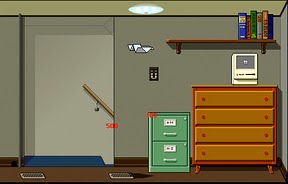This post has not been edited by the GamesBeat staff. Opinions by GamesBeat community writers do not necessarily reflect those of the staff.
In January this year I took on the responsibility of writing articles for MacScene — a small community of Mac and retro gamers. It was part of an effort to force myself to write more. And it gave me the chance to give back to a group of people that had taught me so much over the previous five or six years. It didn’t take me long to aim for something big. I looked around for a decent treatment on the poor state of Mac gaming. There were none that met my standards. Explanations were always vague or incorrect, and key details seldom covered. I thought that someone needed to fix this, and figured it would have to be me.

The loss of Halo is not the only key moment in Mac gaming history, contrary to popular opinion.
My second article for MacScene was a thoroughly researched 2800 word cover story on the history of gaming on the Mac. There were eventually three follow-ups that looked just as in-depth at the present and future. I was immensely satisfied that I had managed to explain not only how Mac gaming got to be in such a sorry state, but also why it is a vital component of video games’ heritage. I craved a broader (and bigger) audience, though, so I thought about how I could get the piece published elsewhere. Enter Bitmob.
I’d been reading Bitmob for around a month at that stage, and was racking my brain for something great I could write for my first contribution to the site. It hit me that I already had just the thing. I saw that there were Mac users on Bitmob, but no-one was writing about Mac gaming. And I got the feeling that a lot of Bitmobbers knew next-to-nothing about the storied history of the forgotten Mac. My Mac gaming history piece was up to professional standards, I was sure. So, with the blessing of MacScene’s owner, I submitted it to Bitmob.
In its first 24 hours, the article picked up around 120 hits and a couple of comments. Not knowing how many hits to expect for a “successful” article, I thought, “Hey, that seems pretty good. Another 100+ people read the article. I don’t think anything I’ve ever written has been read by that many people. Cool!” The next day it was promoted to the front page.
It is now my most commented article, in addition to the second most read — thanks to a news post from Inside Mac Games. Seeing the overwhelmingly positive response gave me a huge boost in confidence and filled me with hunger to get more articles on Bitmob. I wanted to try different things, build an audience, and maybe even get some paid work in the not-too-distant future.
 But first I had a mission to fulfill. I had provided a great overview of gaming on the Mac, but still needed to explain why it is, was, and has always been relevant. I wrote about my favorite Mac game, Glider PRO, in a nostalgic piece that looked back to a time when there were regular Mac exclusives — and they all had something interesting and unique to contribute to the medium. I then — after a brief Bully-infused hiatus — wrote two articles on my personal history with games on the Mac. And there’s more to come. The recent growth in interest around the platform gives me lots of ideas — and motivation — to keep drawing on my 20 years of experience with the Mac, from the exciting and hopeful early days to the dark and dreary late-90s, and onwards to the Intel switch and arrival of Steam.
But first I had a mission to fulfill. I had provided a great overview of gaming on the Mac, but still needed to explain why it is, was, and has always been relevant. I wrote about my favorite Mac game, Glider PRO, in a nostalgic piece that looked back to a time when there were regular Mac exclusives — and they all had something interesting and unique to contribute to the medium. I then — after a brief Bully-infused hiatus — wrote two articles on my personal history with games on the Mac. And there’s more to come. The recent growth in interest around the platform gives me lots of ideas — and motivation — to keep drawing on my 20 years of experience with the Mac, from the exciting and hopeful early days to the dark and dreary late-90s, and onwards to the Intel switch and arrival of Steam.
So far, the response has been great. I’m carving out my niché as the guy who writes about Mac gaming whilst exploring various avenues of both traditional and non-traditional games writing. My Mac articles have all done well, I’ve been quoted by Cipher Prime (the developers of Fractal and Auditorium) in their newsletter, and my Bully Game Diaries garnered a modest audience (certainly more than I expected).
I’ve learned so much from every piece, from ideas and planning through to writing and editing — both my own and Bitmob’s staff. I grow more confident in my own voice with each passing day. That’s a good thing, too, because I’ve got a lot to say.
